Sustainability
Sustainable living
Connect to a ready sustainability ecosystem with people and businesses who care.
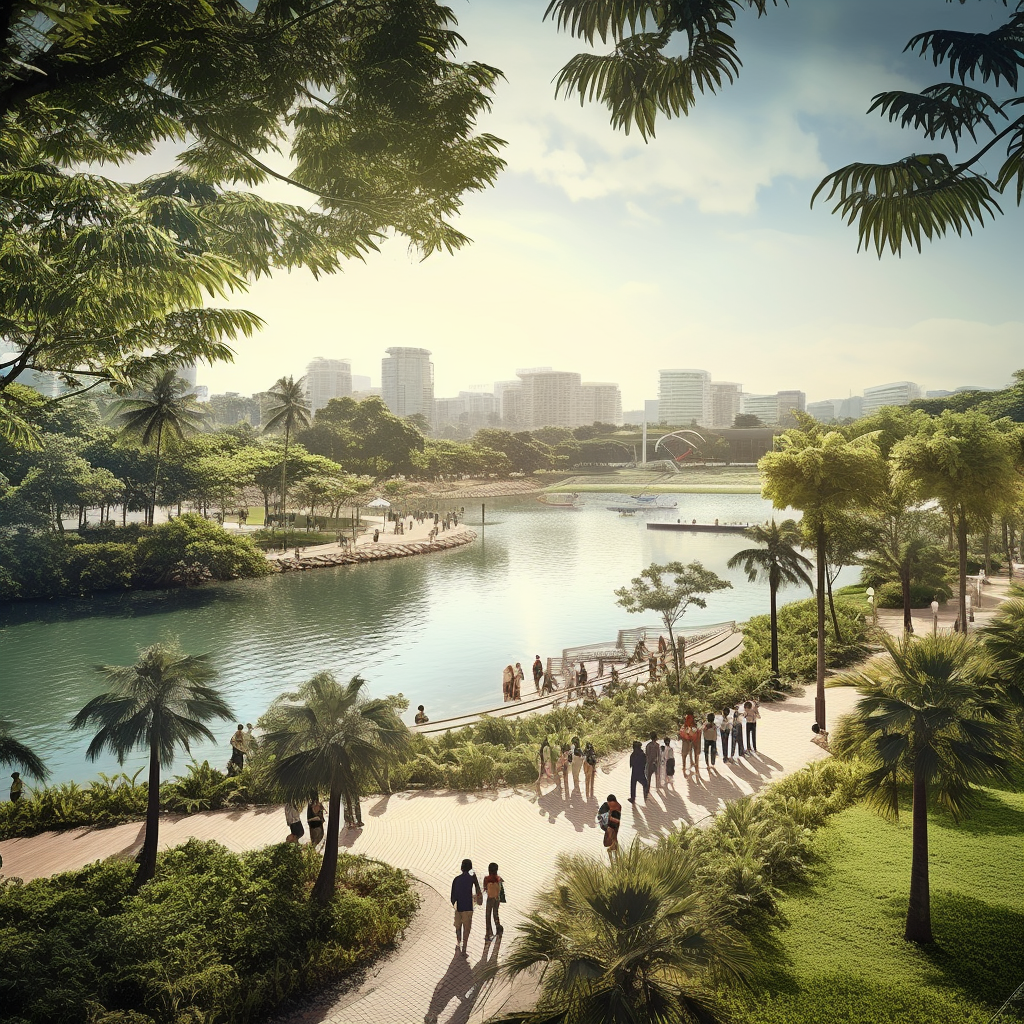 Artist’s impression of an activated, pedestrian-friendly promenade along the water’s edge.
Artist’s impression of an activated, pedestrian-friendly promenade along the water’s edge.
Primed for the green economy
At Jurong Lake District, residents and businesses will collectively shape a sustainable future through shared goals, higher standards and ready technology.
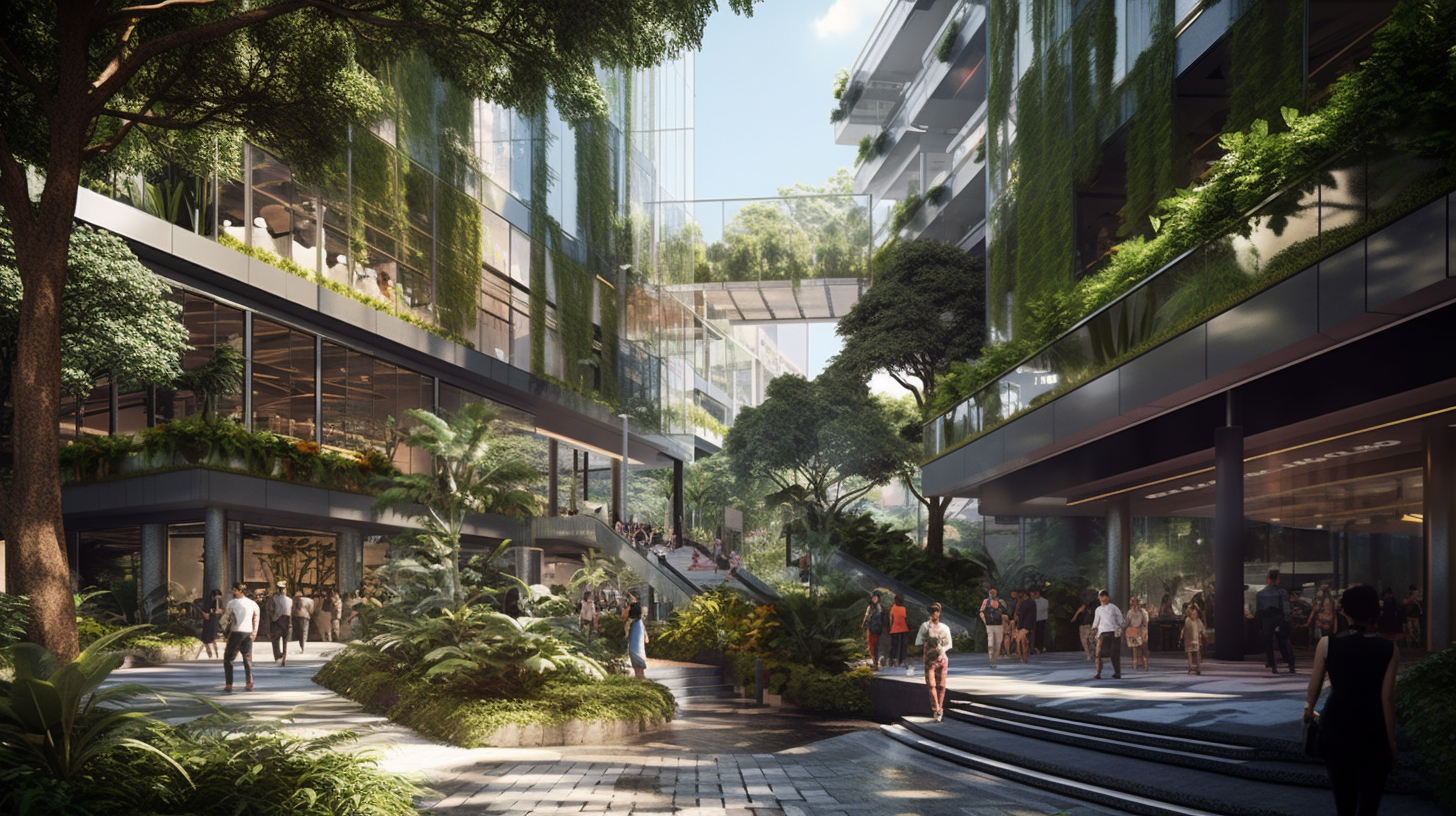 Artist’s impression of an open-to-sky courtyard that is open to the public at all times and lushly landscaped
Artist’s impression of an open-to-sky courtyard that is open to the public at all times and lushly landscaped
Identified as a model for urban sustainability under the Singapore Green Plan 2030, the district will support Singapore’s ambition to be a carbon services hub and a leading centre for green finance in Asia and globally.
Envisaged to attract a new generation of firms from the technology, e-commerce, sustainability and business services sectors, Jurong Lake District will be the epicentre to support talent and companies in creating new growth and new jobs in green innovation.
Government agencies leading Singapore’s sustainability, environmental, development and transport strategies are planning their move to Jurong Lake District in phases, attesting to the government’s commitment to making the district a demonstration for sustainable growth.
The district also acts as a “living lab” and regulatory sandbox, providing opportunities to pilot new urban solutions and refine sustainability-centric initiatives. The district has received interest to pilot proposals such as autonomous vehicle trials, ecologically-friendly leisure facilities and structures made from sustainable construction materials.
Building a model sustainable district
Jurong Lake District aspires to be a model sustainable district.
The six pillars encapsulate our ambitions for the district to achieve our net-zero emissions goal around 2045 for all new developments.
.jpg)
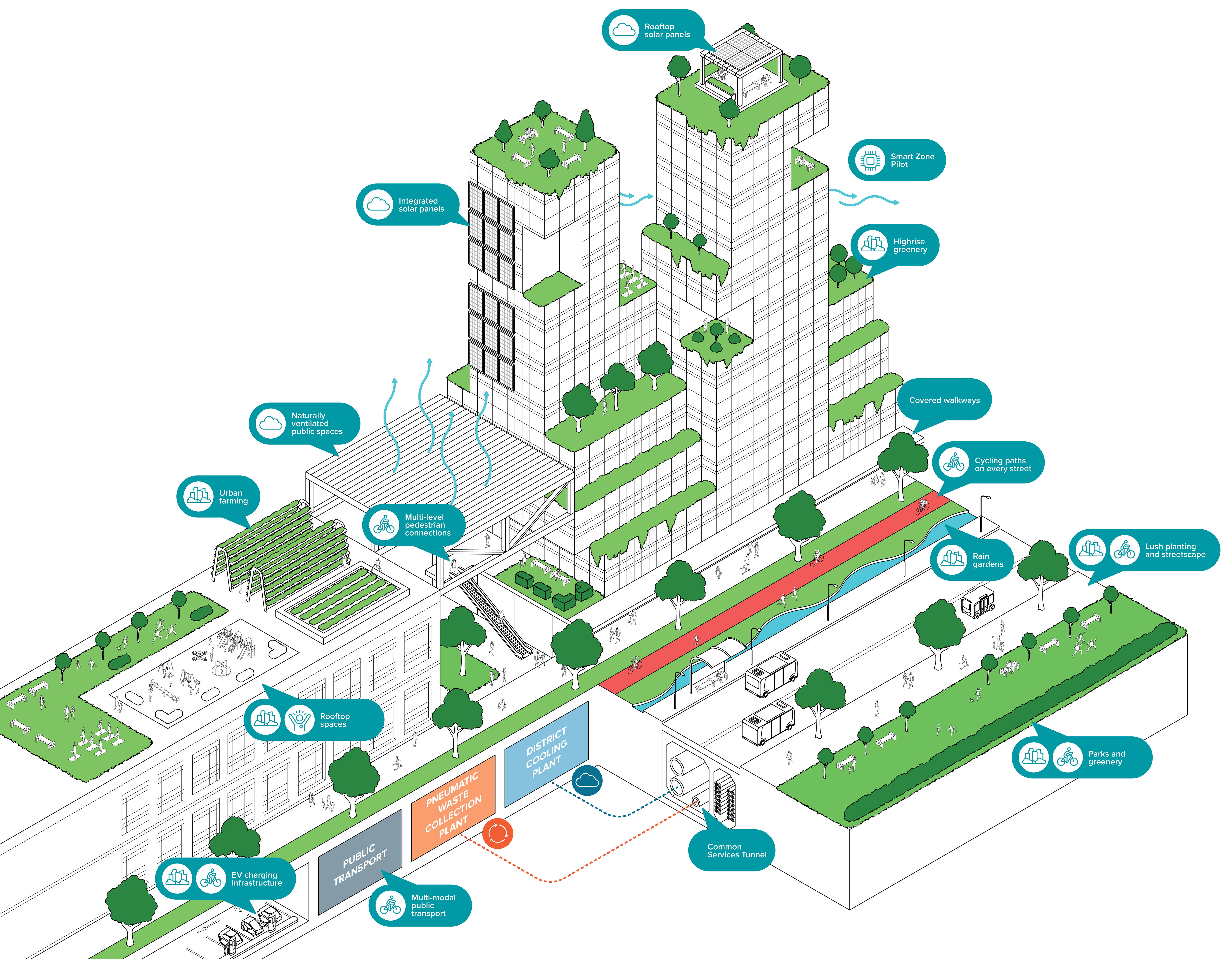 Artist’s impression showing how the sustainability aspirations for Jurong Lake District come together in a typical development.
Artist’s impression showing how the sustainability aspirations for Jurong Lake District come together in a typical development.
Pursuing sustainable transport
Jurong Lake District has high ambitions for green mobility.
By 2032, Jurong Lake District will be served by four MRT lines. At least 85% of all trips are targeted to be made by Walk-Cycle-Ride modes of transport by 2035.
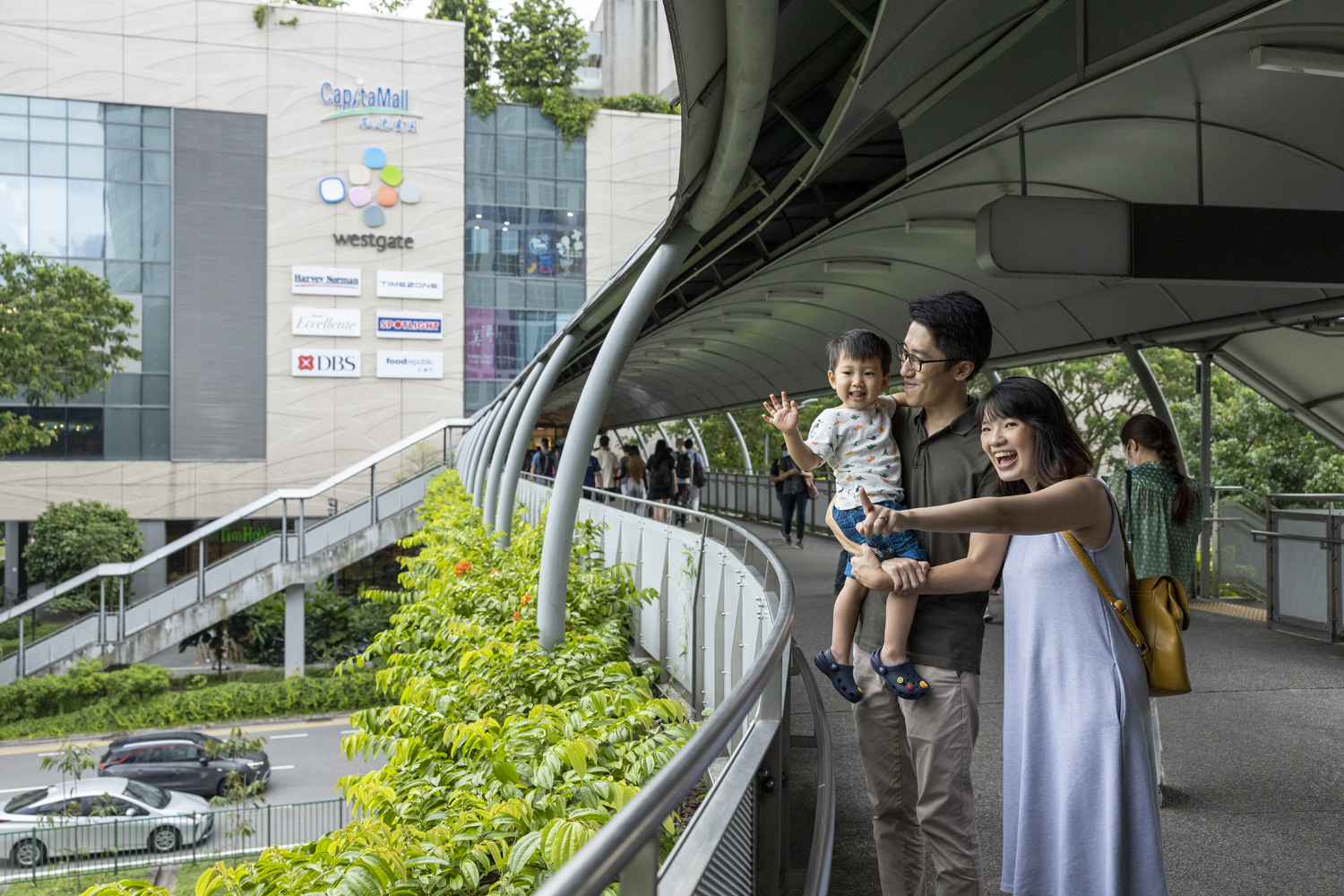 People can walk to their destinations comfortably along the J-Walk, an elevated weather-proof pedestrian network that links buildings, transit stations and public spaces throughout the district.
People can walk to their destinations comfortably along the J-Walk, an elevated weather-proof pedestrian network that links buildings, transit stations and public spaces throughout the district.
(Photography by Chee Boon Pin)
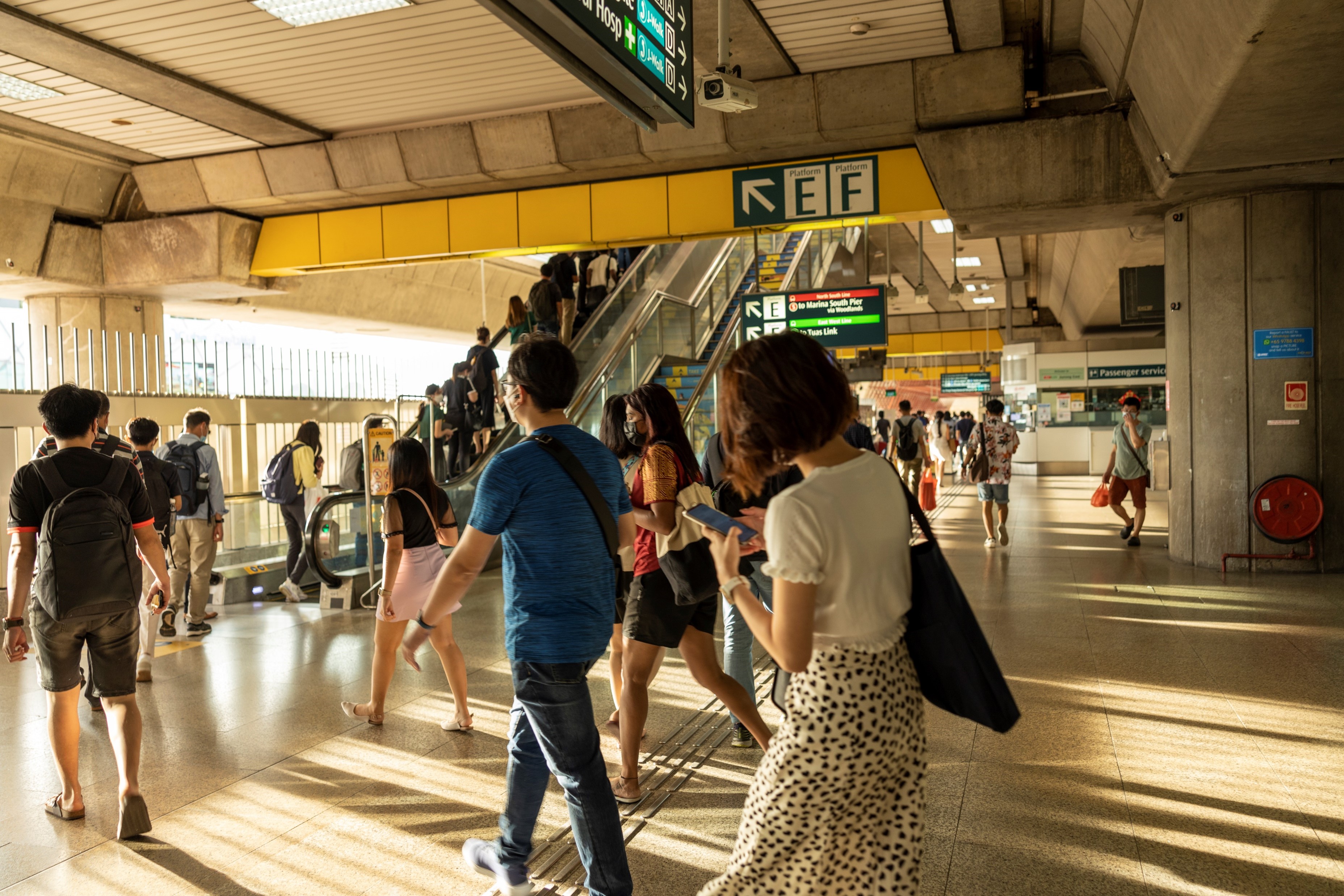 Walk-Cycle-Ride trips will make up at least 85% of all trips to and from Jurong Lake District.
Walk-Cycle-Ride trips will make up at least 85% of all trips to and from Jurong Lake District.
(Photography by Chee Boon Pin)
Key roads will be designed as Transit Priority Corridors, with bus-only usage lane, wider footpaths and cycling paths. The bus fleet serving the district will also comprise cleaner energy buses, including fully electric buses that will be deployed on feeder services by 2030.
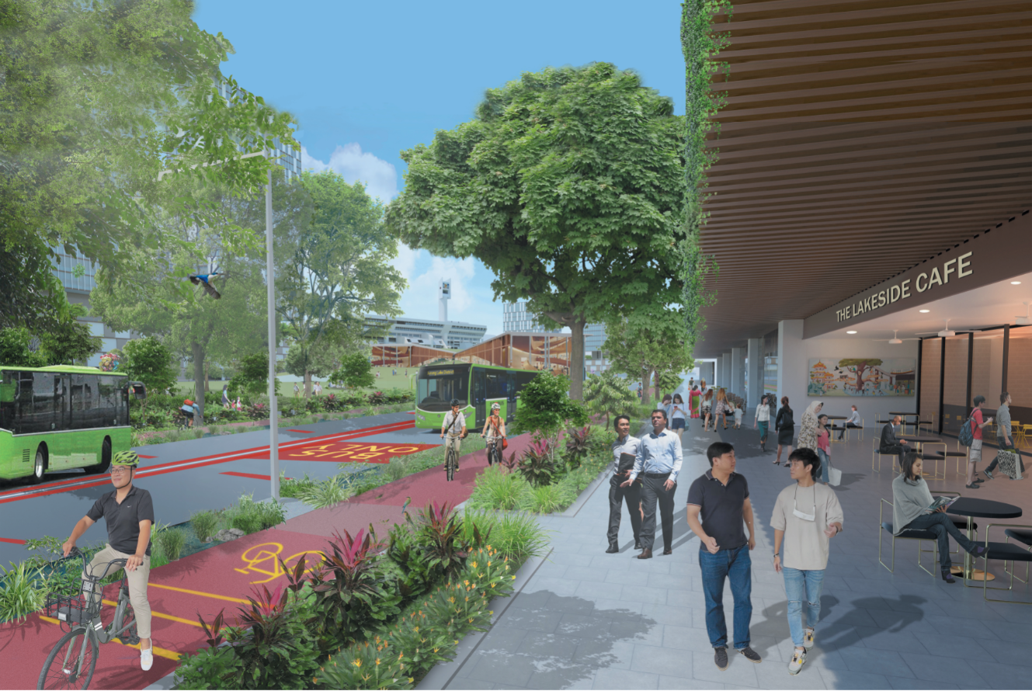 Artist’s impression of comfortable walkable streets lined with amenities.
Artist’s impression of comfortable walkable streets lined with amenities.
Car parking provisions will also be lowered to reduce traffic and create a people-friendly environment.
The district will be designed to readily support autonomous vehicles for both passengers and goods. To encourage the electrification of private vehicles, EV charging points will be progressively deployed across the district.
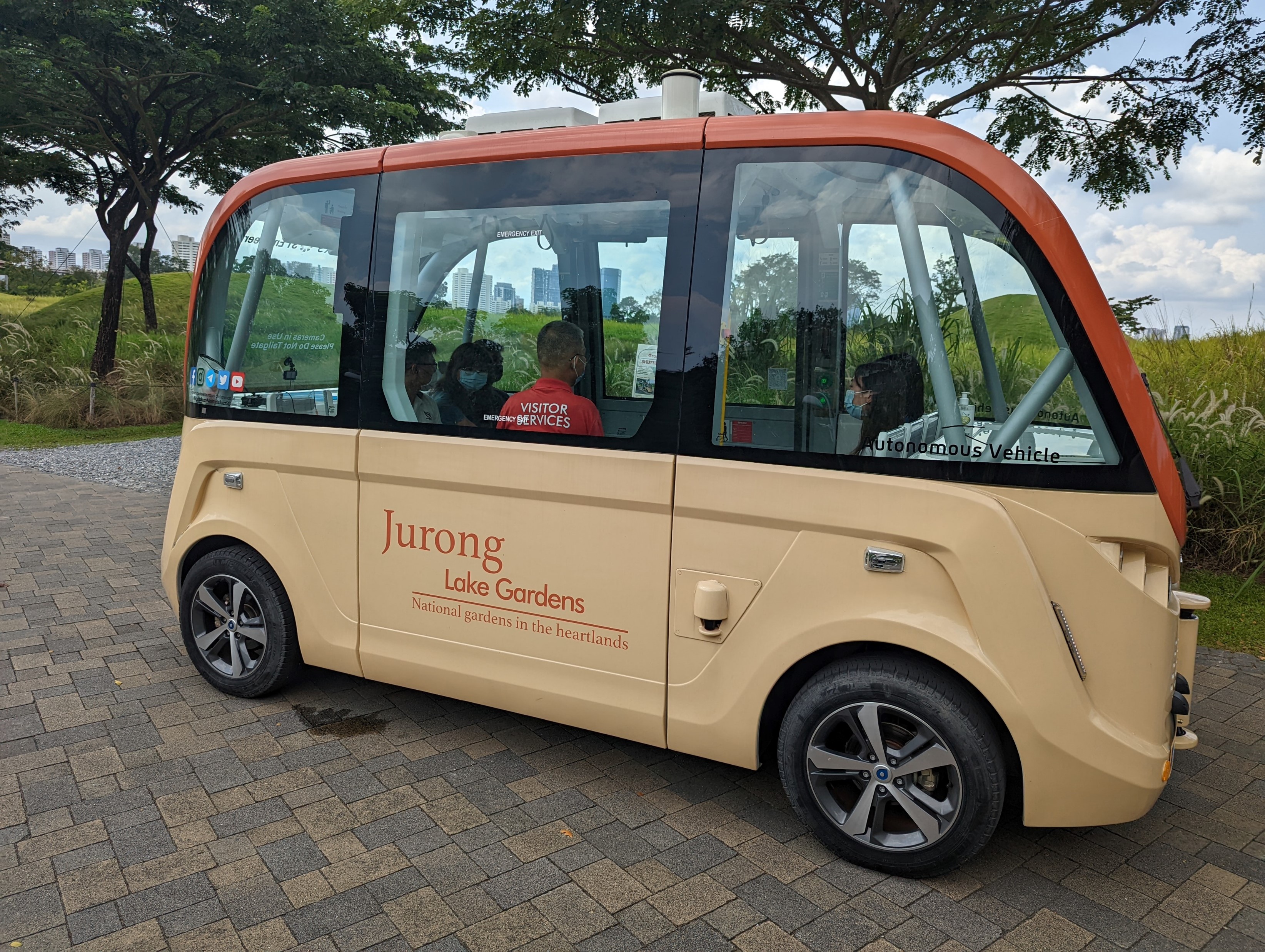 Autonomous vehicles at Jurong Lake Gardens are an example of a trial to prepare for the wider future deployment of AVs in the district.
Autonomous vehicles at Jurong Lake Gardens are an example of a trial to prepare for the wider future deployment of AVs in the district.
(Image courtesy of NParks)
Enabling healthy living & building a city in nature
More than 100 hectares of land in Jurong Lake District has been set aside for parks and green spaces.
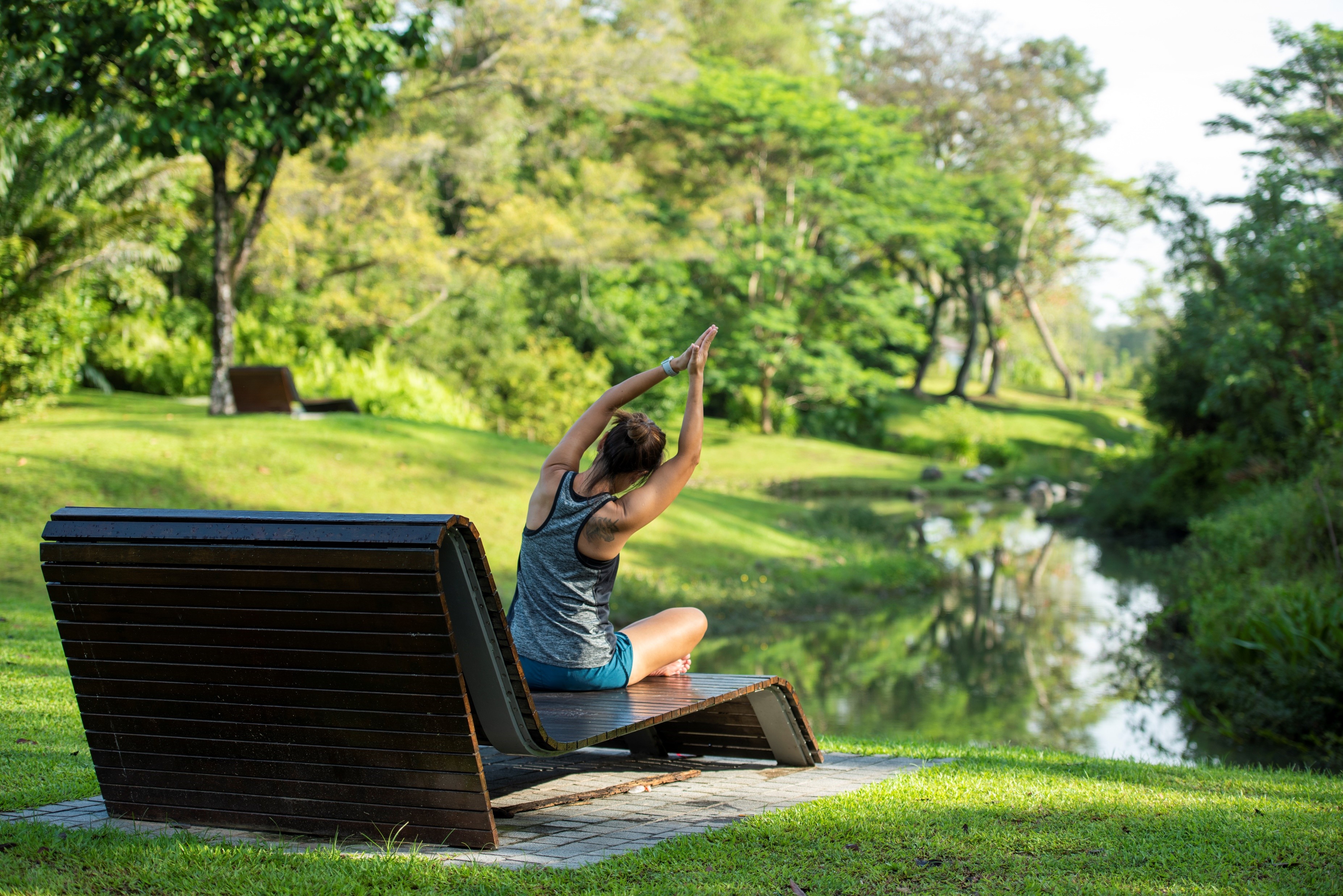 Creating active communities through people-centric design at Jurong Lake District.
Creating active communities through people-centric design at Jurong Lake District.
(Photography by Chee Boon Pin)
New buildings will achieve 100% landscape replacement, where greenery lost through development will be fully replaced by vertical greenery, sky terraces and landscaping.
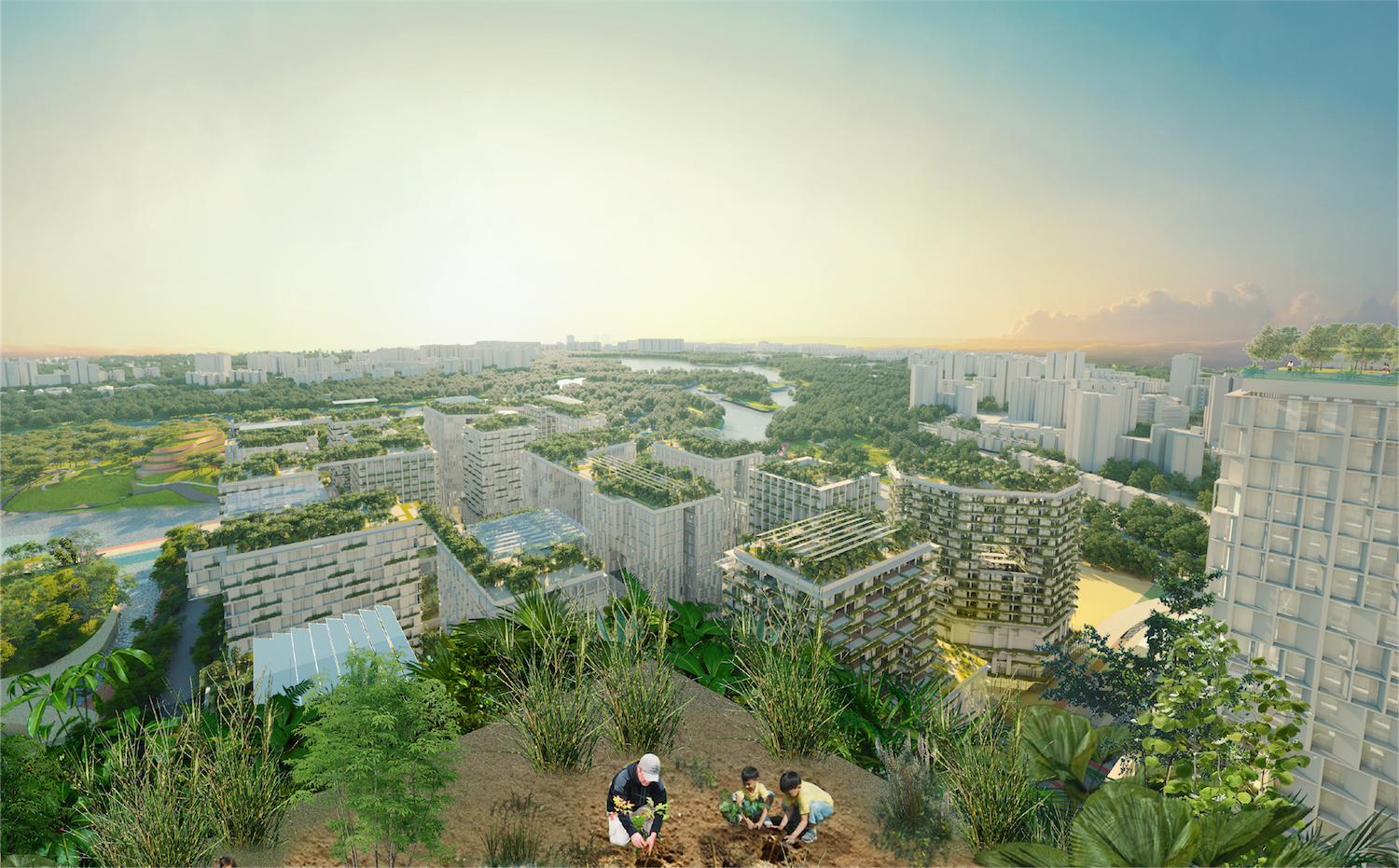 Artist’s impression of skyrise and rooftop greenery on buildings collectively forming a ‘green carpet’ in the sky.
Artist’s impression of skyrise and rooftop greenery on buildings collectively forming a ‘green carpet’ in the sky.
(Image courtesy of KCAP Architects & Planners, SAA Architects, Arup, S333 and Lekker)
 Artist’s impression of developments with lush roofscapes offering amenities to support healthy lifestyles.
Artist’s impression of developments with lush roofscapes offering amenities to support healthy lifestyles.
(Image courtesy of KCAP Architects & Planners, SAA Architects, Arup, S333 and Lekker and URA)
Thermal comfort, wind flow and shade analyses will be conducted at the development design phase to combat urban heat island effect, reduce energy consumed for cooling and create a comfortable environment for occupants.
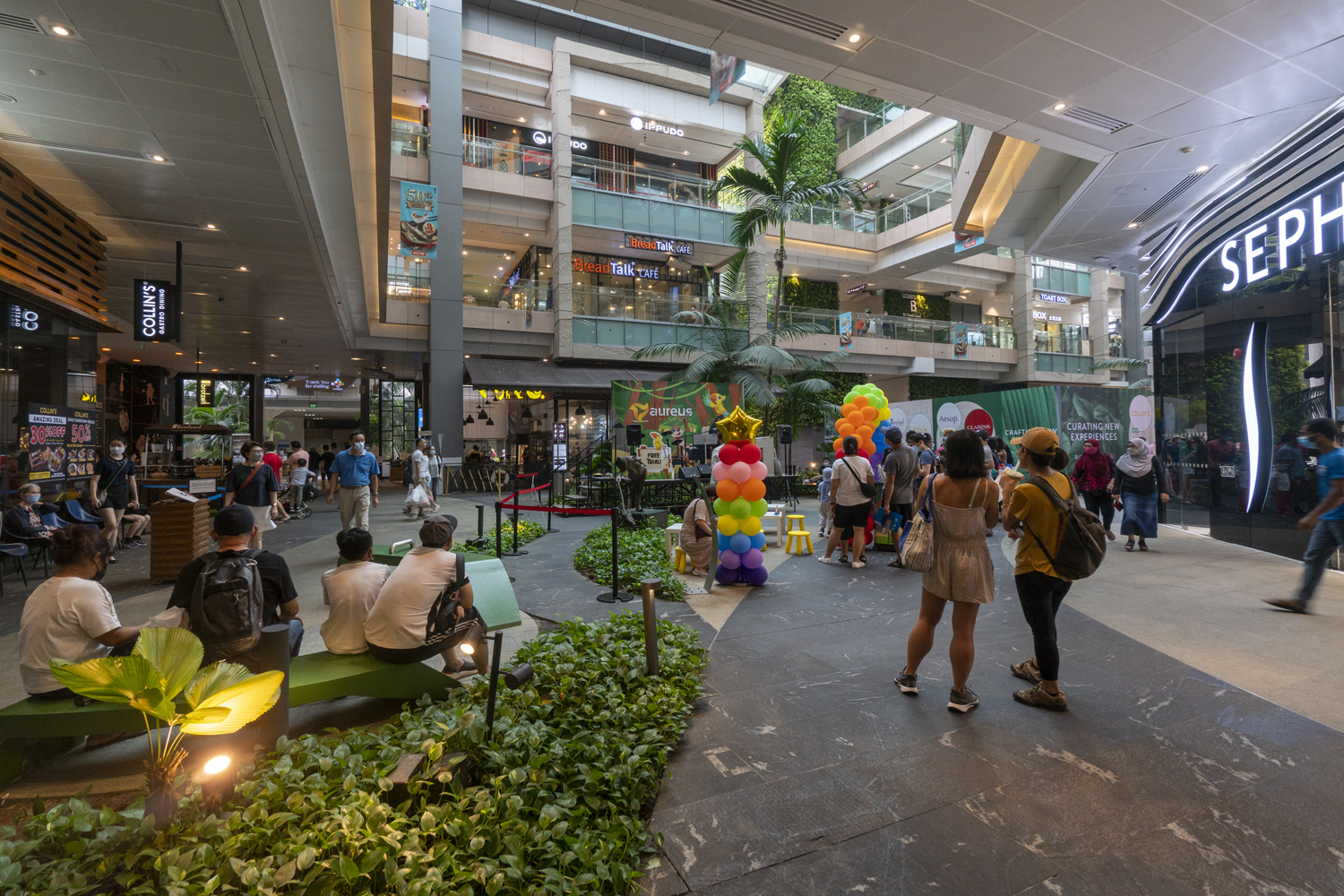 Greenery and natural ventilation at the Westgate Mall courtyard create a pleasant environment for shoppers.
Greenery and natural ventilation at the Westgate Mall courtyard create a pleasant environment for shoppers.
(Photography by Chee Boon Pin)
Towards net zero emissions and zero waste
Embedded from the start, centralised district infrastructure will optimise the use of land and energy resources across Jurong Lake District.
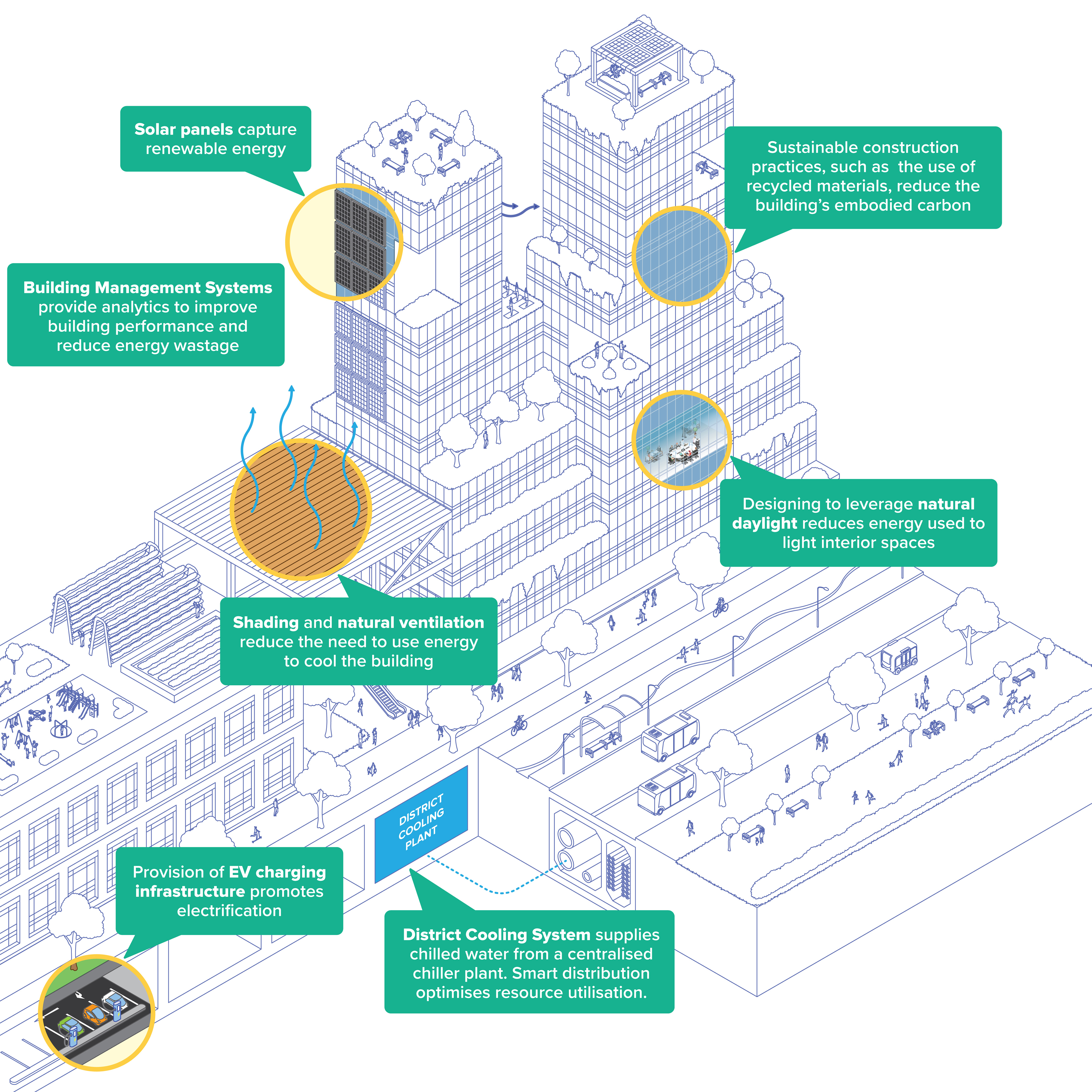 Artist’s impression showing how building design and management can contribute towards achieving net zero emissions.
Artist’s impression showing how building design and management can contribute towards achieving net zero emissions.
All new buildings will be required to minimally achieve Green Mark Platinum (Super Low Energy) certification. Where feasible, we will aim for some developments to include Zero Energy Buildings. We will also deploy solar on all suitable surfaces within the district, not only on rooftops or building facades but also on vacant plots of land as a transitory measure to offset the district’s emissions while the national grid is decarbonised over time.
Jurong Lake District will be served by the District Cooling and District Pneumatic Waste Conveyance Systems. These systems could be housed in underground Common Services Tunnels to deliver cleaner and more efficient urban services to all buildings, which would also make our streets more pleasant by eliminating the need to dig up the road to lay utilities.
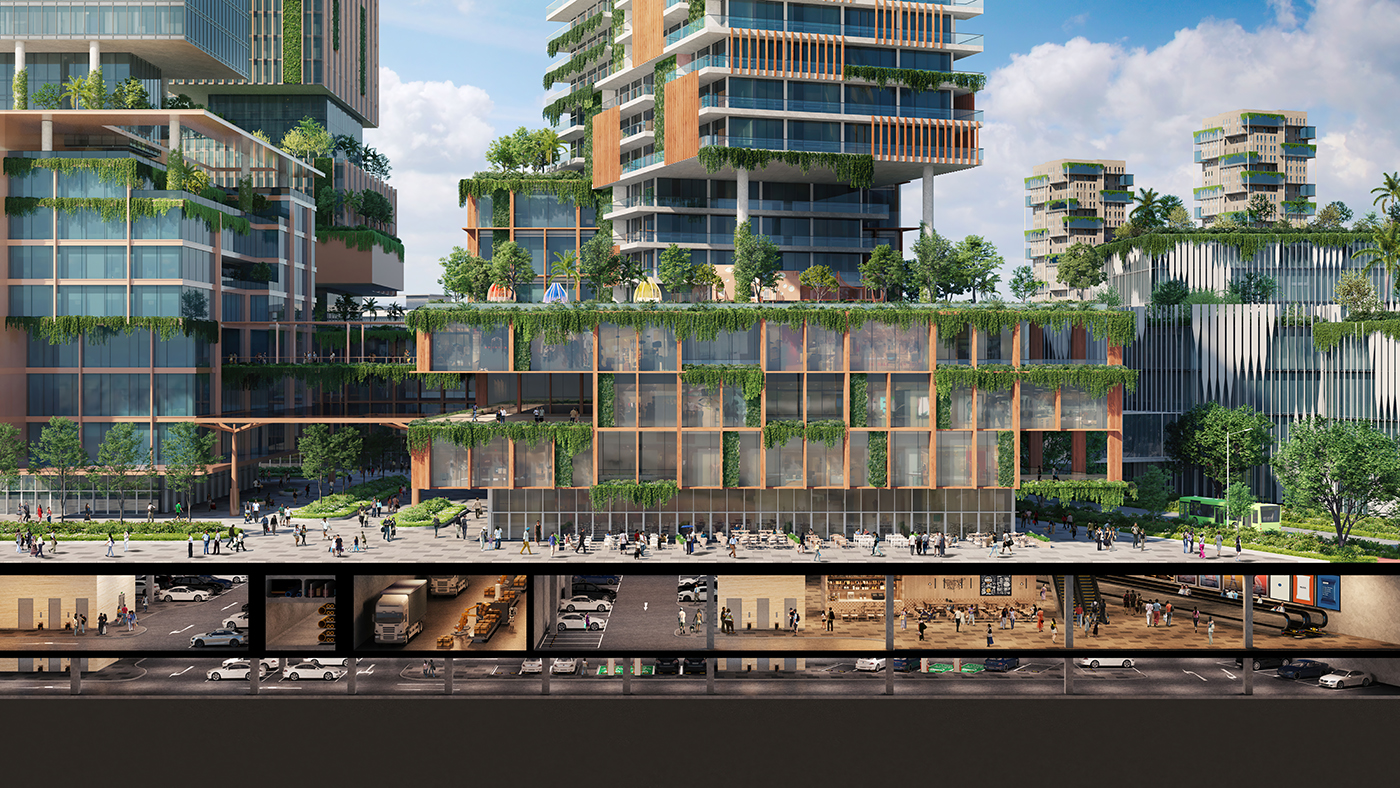 Artist’s impression of how district infrastructure, vehicular circulation, deliveries and servicing will be located at the basement levels, freeing up the ground floor for more vibrant street life.
Artist’s impression of how district infrastructure, vehicular circulation, deliveries and servicing will be located at the basement levels, freeing up the ground floor for more vibrant street life.
Advancing sustainability through partnership and innovation
Sustainability alliances will be formed among existing stakeholders in the district to adopt and share best practices, and work together to deploy solutions that address commonly encountered issues.
Businesses can tap on urban technologies to operate more efficiently and sustainably, and collectively demonstrate a greener way of life in an innovative district.

